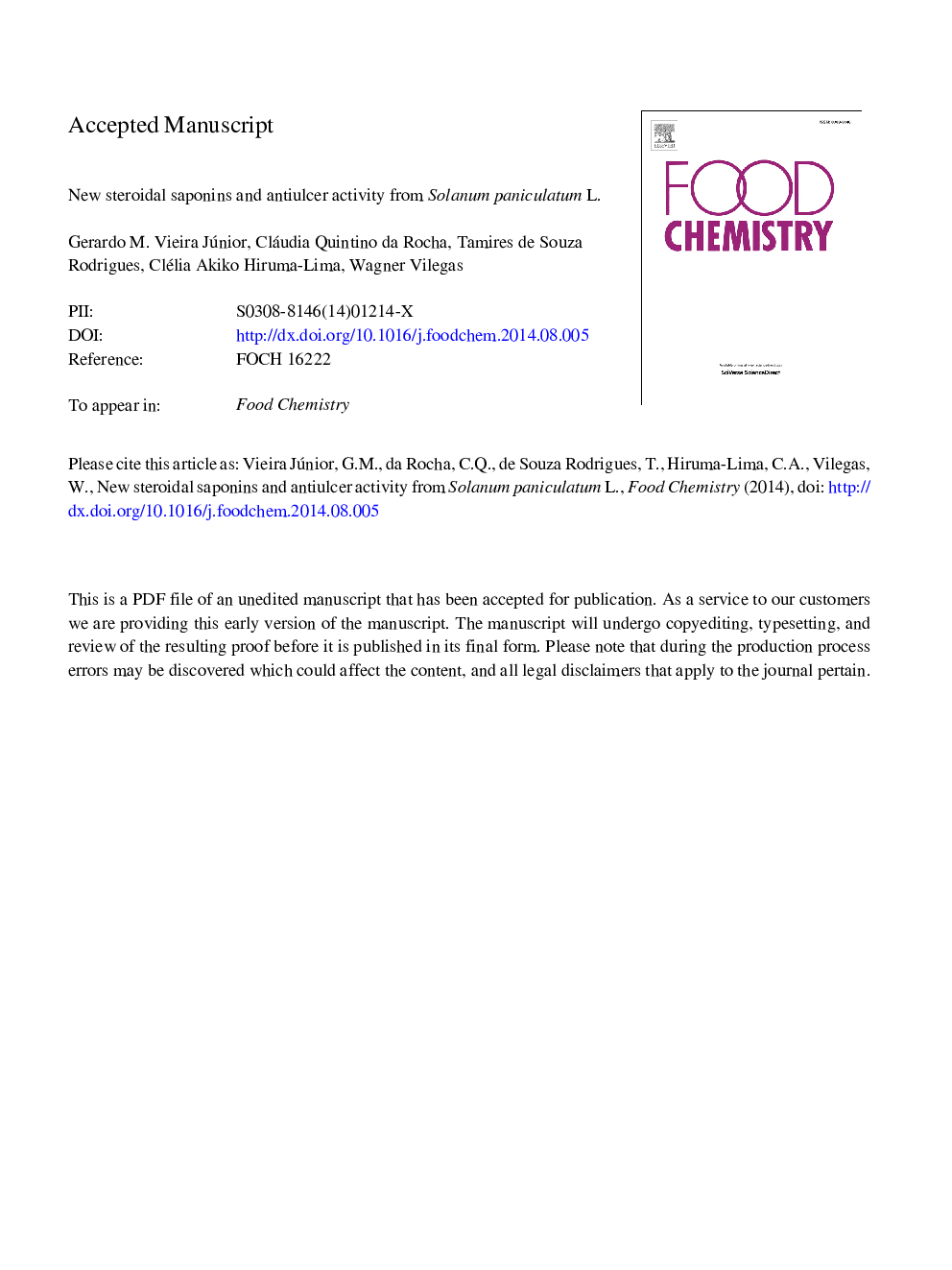| Article ID | Journal | Published Year | Pages | File Type |
|---|---|---|---|---|
| 7591278 | Food Chemistry | 2015 | 30 Pages |
Abstract
Solanum paniculatum L. (Solanaceae) is a plant species widespread throughout tropical America, especially in the Brazilian Savanna region. It is used in Brazil for culinary purposes and in folk medicine to treat liver and gastric dysfunctions, as well as hangovers. Fractionation of the ethanolic extracts (70%) from aerial parts (leaves and twigs) of S. paniculatum led to the isolation of the two new saponins (22R, 23S, 25R)-3β, 6α, 23-trihydroxy-5α-spirostane 6-O-β-d-xylopyranosyl-(1â³â³Â â 3â³â²)-O-[β-d-quinovopyranosyl(1â³â²Â â 2â²)]-O-[α-l-rhamnopyranosyl(1â³Â â 3â²)]-O-β-d-quinovopyranoside (1) and diosgenin 3-O-β-d-glucopyranosyl(1â³Â â 6â²)-O-β-d-glucopyranoside (2) together with four know compounds: caffeic acid (3), diosgenin β-d-glucopyranoside (4), rutin (5), and quercetin 3-O-α-l-rhamnopyranosyl (1â³â²Â â 6â³)-O-β-d-galactopyranoside (6). The structures of these compounds were elucidated by extensive use of 1D and 2D NMR experiments along with HRESIMS analyses. Different doses (31.25-500 mg/kg) of ethanolic extract of leaves from S. paniculatum were evaluated against gastric ulcer induced by ethanol in rats. The lower dose of extract able to promote antiulcer effect was 125 mg/kg. The treatment with S. paniculatum by oral route was able to decrease gastric lesion area and also reduced levels of myeloperoxidase (MPO) in the gastric mucosa. Our results reveal for the first time, steroidal saponins from S. paniculatum and the antiulcer effect of this species at this lower dose.
Related Topics
Physical Sciences and Engineering
Chemistry
Analytical Chemistry
Authors
Gerardo Magela Vieira Júnior, Cláudia Quintino da Rocha, Tamires de Souza Rodrigues, Clélia Akiko Hiruma-Lima, Wagner Vilegas,
